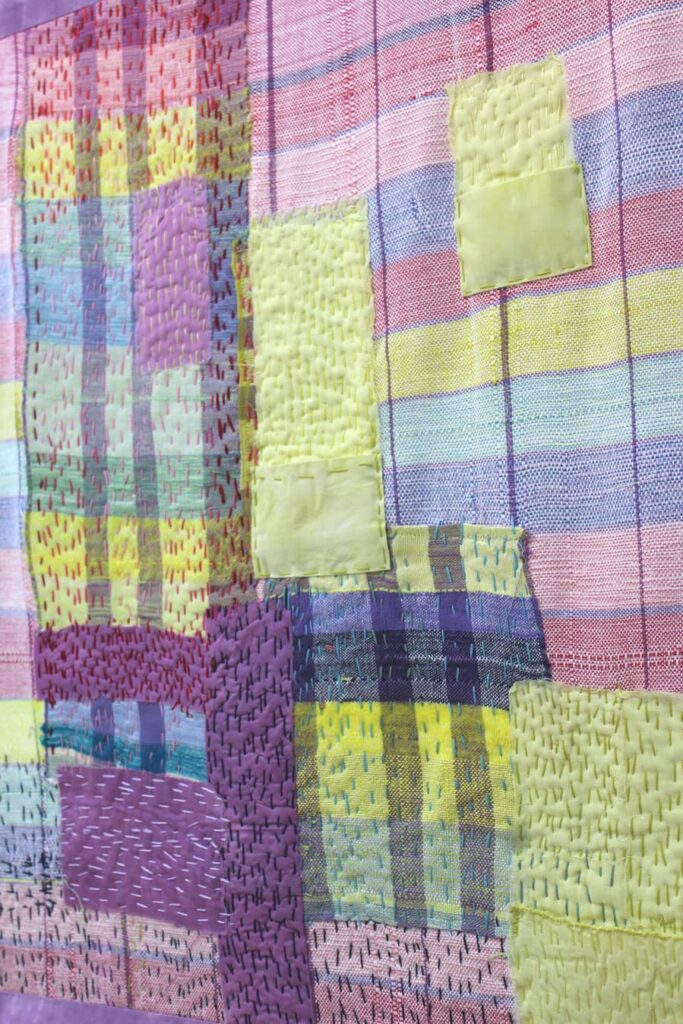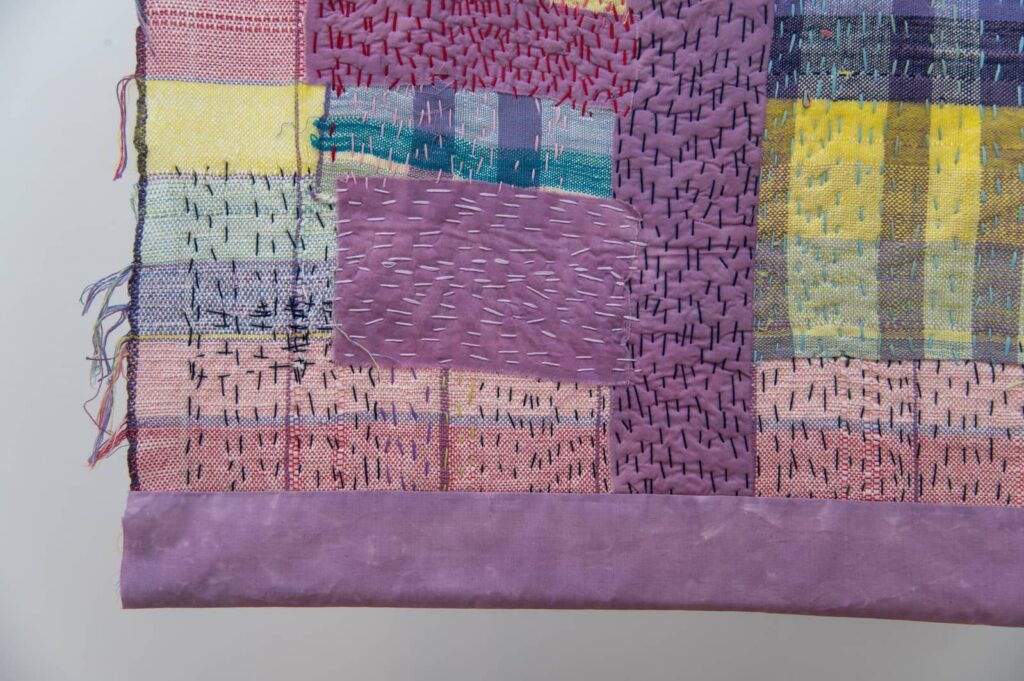
Carter Shocket is a Brooklyn-based textile artist in residence at the Textile Arts Center. His work is grounded in his experiences as a queer and transgender man. Much of his art relates to transgender bodies and maps networks of care inside the transgender community.
Like myself, Carter is originally from North Carolina. He received his bachelor of arts degree in my hometown at the University of North Carolina at Chapel Hill (go Heels!) and moved to Brooklyn to pursue textile art. I consider him family, even though we have only met a few times. Our shared history growing up queer and transmasculine in North Carolina to working as textile artists in Brookyn gives us a sort of shorthand, a dialect of experience that allows us to speak freely. To put it simply, talking with Carter is easy. We understand each other.
Carter’s work as a textile artist speaks to me just as clearly. When I first saw his latest piece, a woven, mended, and quilted tapestry called ‘Maricare_2023_P*ssy.gsheet,’ the multiplicity of the soft pastels of the color palette and the translation of a grid to a woven plaid was instantly legible as an essential piece of the transgender archive: the care sheet. I needed to see it in person, to feel the soft pads of batting and trace the mended lines of embroidery thread.
As I arrived at his studio, Carter had just finished tacking down the finished edges of his latest tapestry piece. “I can’t sew in a straight line,” he confessed, grinning, “but it does the job.” In a dark t-shirt and running shoes, he is a quiet figure in the bright noise of his works in progress: a loom warped with purples and yellows, balls of yarn and swatches of woven fabric tacked next to drawings and orange “MEN WORKING” stickers from his latest street art project. He congratulated me on my energy and ease of moving around the space after my own recent gender affirming surgery, a bilateral mastectomy colloquially referred to as “top surgery.”
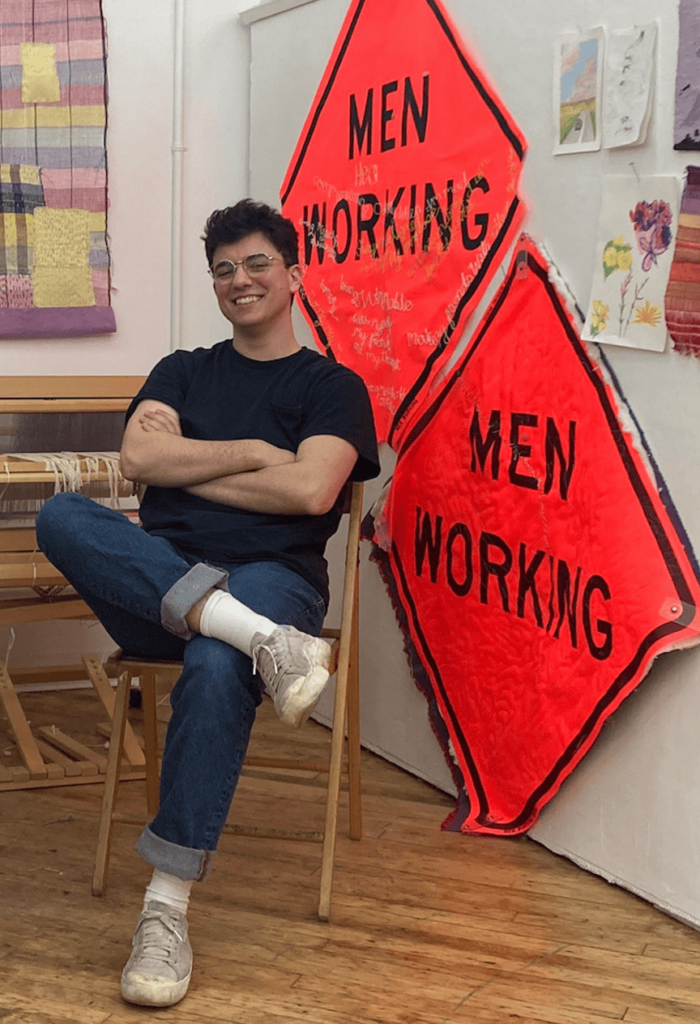
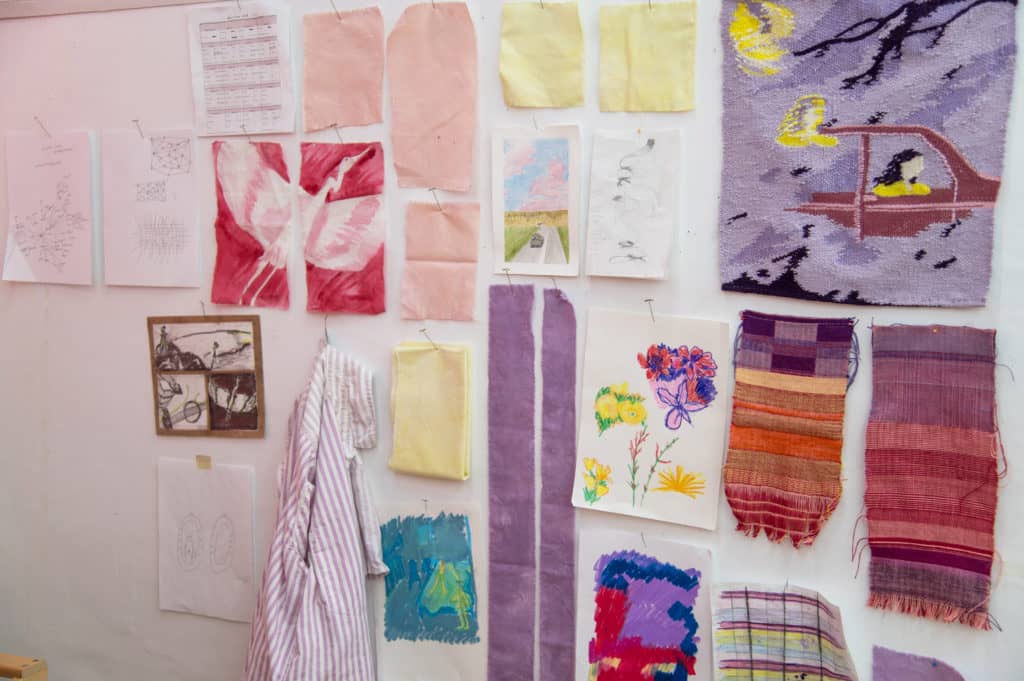
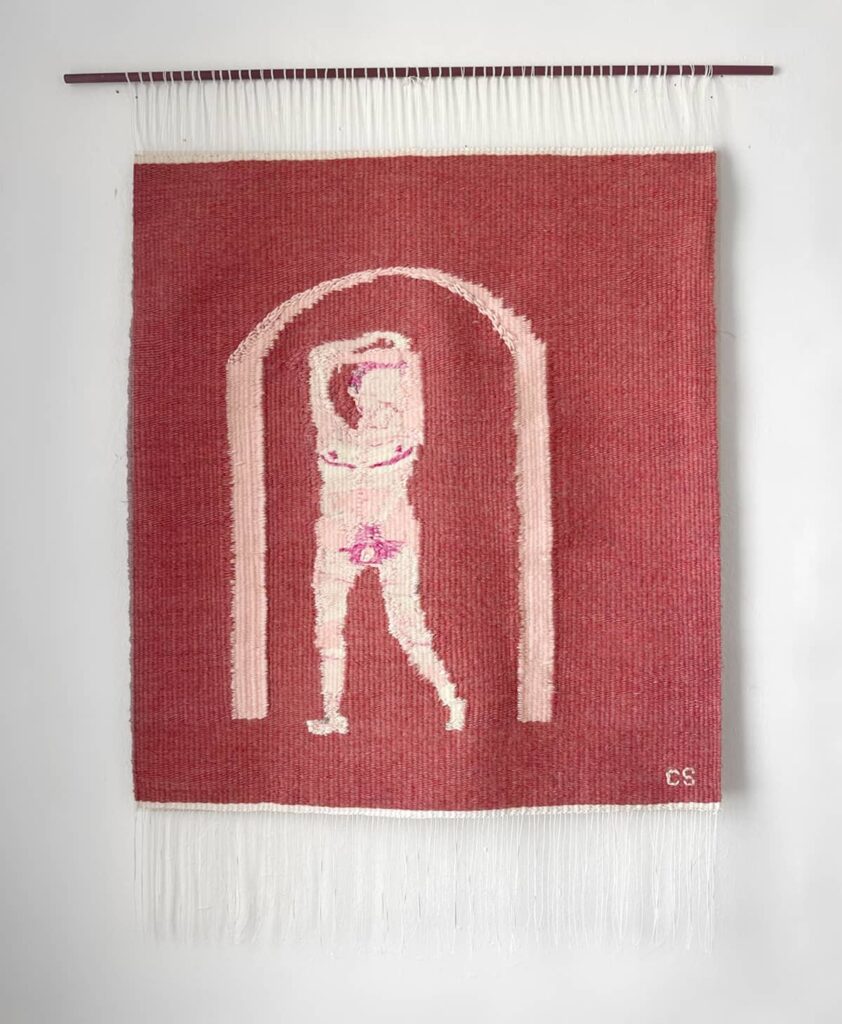
“I think at two weeks post op I was still on percocet,” he said, “so it’s crazy that you’re here.” Carter’s own top surgery scars have been featured on one of his tapestries, ‘Figure 1’ in 2023. His transness features throughout his work, and so does his masculinity. As a transmasculine, non-binary person, my own fiber art is also shaped by my transness and relationship to masculinity. That’s part of what we’re talking about today: textiles and trans identity.
Tell me about your latest piece.
So this is a weaving, which is an abstracted expression of a Google spreadsheet that we made for my friend who had surgery, blocking out who would visit when and what they would bring. It’s something that I see all the time and something that I think is one of the bedrocks of the trans community. I wanted to make a record of it, to archive it through my medium, which is textiles. It’s a grid, a plaid. And so when I saw the calendar, I was like, ‘Oh, this is perfect for the loom.’
How did you start weaving?
During COVID lockdown, I started weaving using a frame loom at home that I made using a picture frame and nails, experimenting with different materials. When I came to TAC (the Textile Art Center), I learned how to use the floor looms and I took a couple of weaving classes. This is actually my first large piece on a floor loom, and my first ever floor loom weaving is sewn into the piece. It was actually a color test for the larger piece, learning how to make a plaid. But then once I had made the background, which was the original plan for just an interpretation of the spreadsheet, I realized that it wasn’t enough texture.
What did the process of layering look like?
I used a darning technique because I liked the way it parallels the process of healing. I also like the idea that within each care spreadsheet, everyone who has come to care for you has had their own version of community caretaking. It’s also like layers upon layers of spreadsheets, layers of people caring for you who are then cared for by you and caring for other people. The more layers, the sturdier the piece actually becomes, which is exactly how community care works. I also just like the way the colors are playing with each other, and the way the visible mending and the stitching allows for more texture and color play. I also put in pockets of batting, which makes me think of a quilt or blanket, an object which provides warmth and comfort. The pockets are representative of the empty google sheet cells. The idea is that it compels the viewer to want to fill it, to contribute. I want people to want to be a part of the piece.
I was just telling a friend about this piece of yours because after my own surgery– while I didn’t have an official spreadsheet– I did have different people checking in on me and bringing food at different times that first week. It was really incredible, the network of people who showed up for me. So this piece feels really representative of that for me as well, the way we show up for and support each other.
I think the primary need is actually just for people to come to lift your spirit. It’s so much of that aspect of the trans community that I think that cis people don’t see. The sheer amount of care we do for each other. I’m interested in redefining transness not as transition but as what happens after you come out, finding community and building community. I think that’s how I relate to trans visibility. If there’s a way to change or shift major narratives about what a trans person is or what it means to be trans, it’s that transness is being in community. When I meet a fellow trans person in public, it feels like meeting part of my family that I have not yet met. I want to communicate to them like “I am family, your family. We exist in community with each other. I love you. I care for you. If you need something, I am here.”
Carter Shocket (he/him) is a trans and queer interdisciplinary artist from North Carolina living and working in Brooklyn, New York. His work includes public installation, collaborative work, weaving, tapestry, and other process based textile art. You can learn more about his work here.
